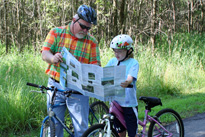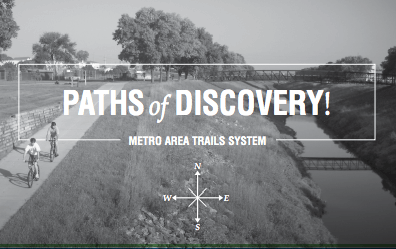Metro Trails Overview
They are called Paths of Discovery. They crisscross the Omaha and Council Bluffs metro area, spreading outward, safe, diverse, inviting, healthy and fun.

The birth of our outstanding Metro Area Trails System came in 1990 with the opening of the first three-mile section of the Keystone Trail in Omaha. Now 27-miles long, the Keystone serves as the backbone for an ever-expanding network. The nationally recognized success of our trails effort is due to a coordinated commitment among local agencies for planning and constructing trails.
The trails network is available to a wide variety of user groups, including walkers, joggers, bicyclists, skaters and cross-country skiers. Further, the system is accessible to people with disabilities and anyone just wanting to experience nature.
While the network seamlessly connects parks, sports complexes, swimming pools, and flood control reservoirs such as Zorinsky and Wehrspann Lakes, recreation is not its sole function. These trails are an excellent alternative to the use of automobiles and other, more traditional, methods of transportation.
There is no fee, nor a fitness test for admission to the Metro Trails System. Every family – regardless of size, regardless of income, regardless of where they live – can make it part of their lives. It’s there every day for biking, hiking, skating, jogging, or just enjoying family time.
There is a trail near everyone, whether in Omaha, Council Bluffs, Ralston, La Vista, Papillion, Bellevue or a growing number of smaller communities. Get going on your own Pathway of Discovery.
Trails at Chalco Hills Recreation Area
To see trails, mile markers, locate yourself (and much more) at Chalco Hills Recreation Area, explore the features by using our print or interactive park maps.
City of Omaha Trails Updates & Project Schedule – Omaha Trails Projects
For more information contact:
Eric Williams 444-6222 or ewilliams@papionrd.org.


